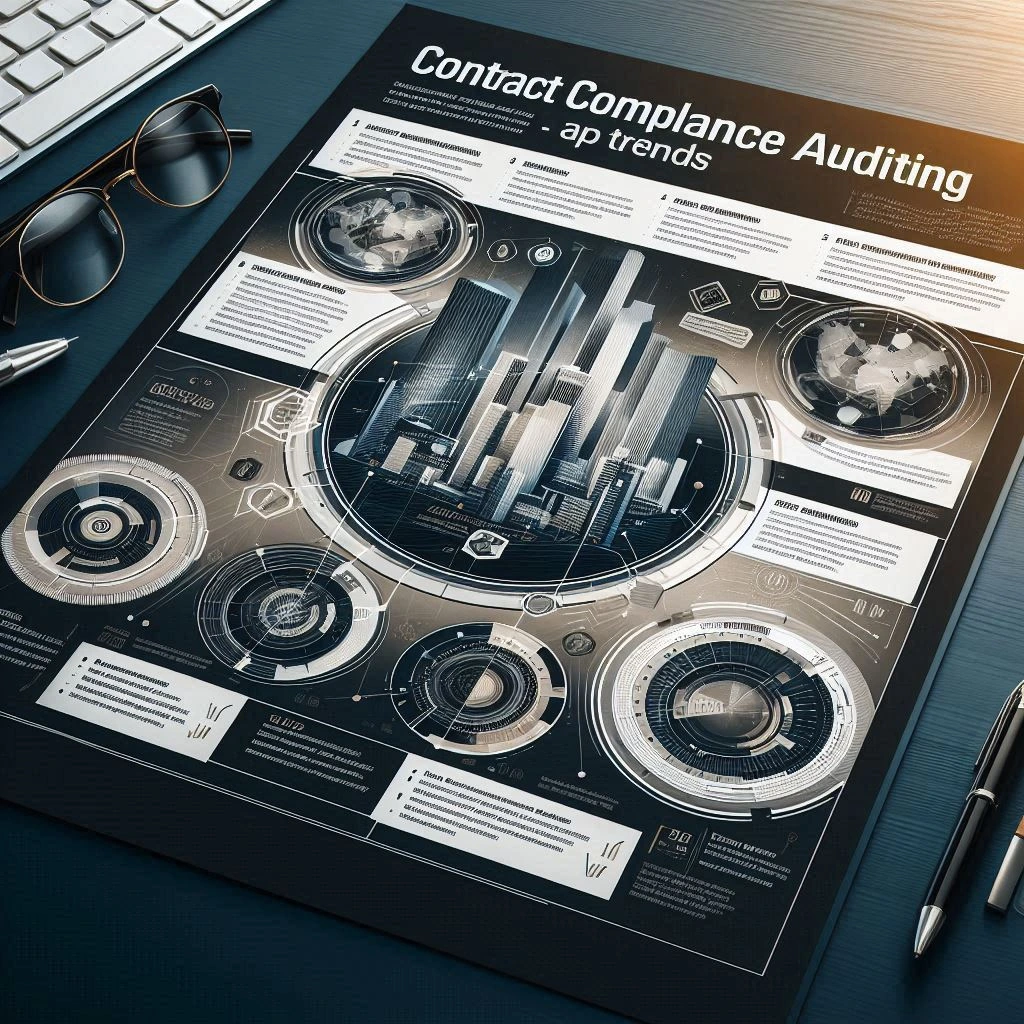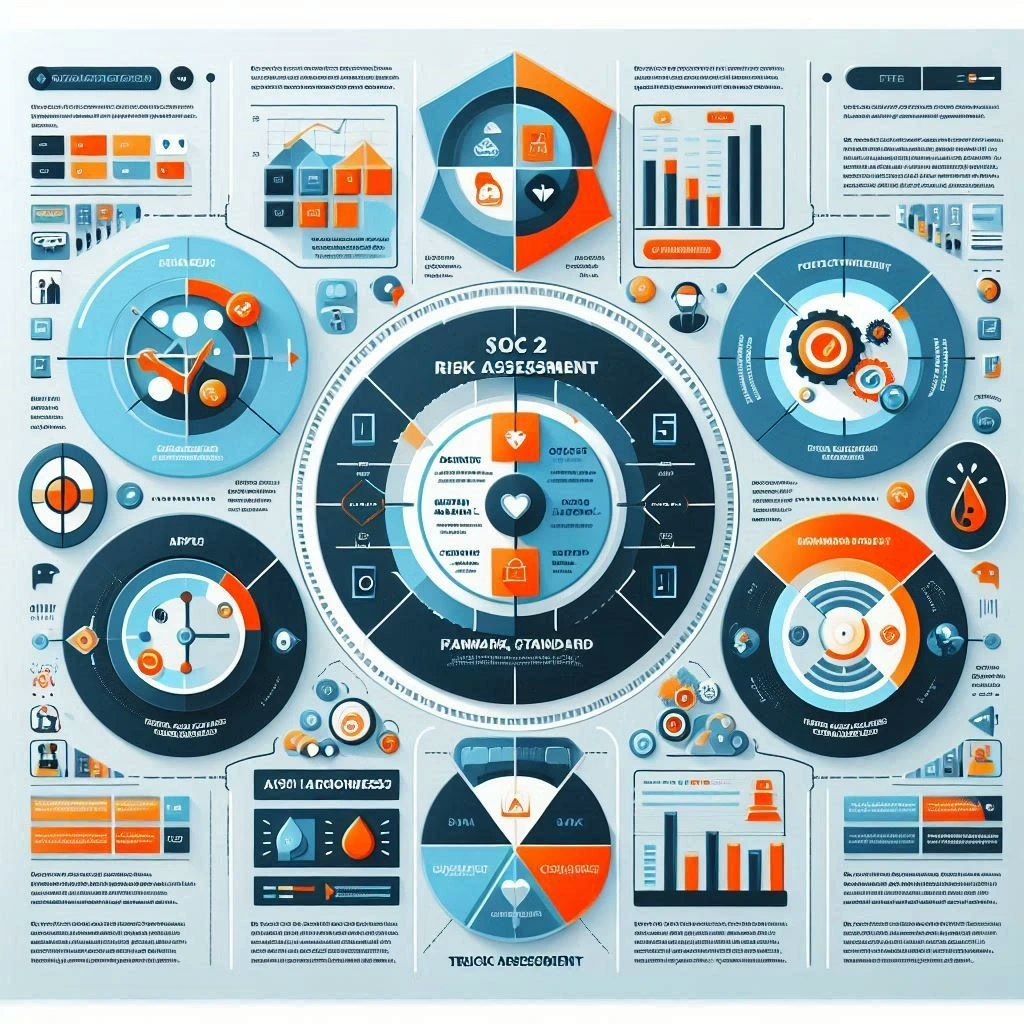If you want to ensure your contracts are being properly followed, hiring a contract compliance auditor is essential. Contract compliance auditing is a critical component of internal audit processes, focusing on ensuring that all parties involved in a contract adhere to the agreed-upon terms and conditions. This type of auditing not only safeguards an organization’s interests but also enhances its strategic and financial strength by identifying potential risks and areas for improvement. By systematically reviewing contracts, compliance auditors can provide valuable insights that help organizations navigate the complexities of contract management and maintain robust relationships with suppliers and partners [1][12].
The landscape of compliance is continually evolving, influenced by factors such as technological advancements, regulatory changes, and shifting market dynamics. As organizations strive to remain competitive and compliant, it becomes increasingly important for internal auditors and compliance managers to stay informed about these developments. Failing to adapt to the changing environment can lead to missed opportunities and increased risks, making it essential for professionals in this field to be proactive in their approach to contract compliance auditing [5][11].
Emerging trends play a pivotal role in shaping the future of compliance auditing. They not only highlight the latest tools and methodologies but also provide a framework for understanding how these changes can enhance auditing practices. By recognizing and embracing these trends, internal auditors can improve their effectiveness, streamline processes, and ultimately contribute to the overall success of their organizations. In the following sections, we will explore the top five trends in contract compliance auditing that you cannot afford to ignore, equipping you with the knowledge to stay ahead in this dynamic field [2][10].
Trend 1: Increased Use of Technology and Automation
In the rapidly evolving landscape of contract compliance auditing, the integration of technology and automation has become a pivotal trend that internal auditors and compliance managers cannot overlook. The adoption of advanced tools and methodologies is reshaping how audits are conducted, enhancing efficiency, accuracy, and overall effectiveness.
Adoption of AI and Machine Learning
Artificial Intelligence (AI) and machine learning (ML) are at the forefront of this technological revolution in auditing. These technologies are being leveraged to automate routine compliance tasks, which significantly reduces the time auditors spend on manual processes. By utilizing AI algorithms, auditors can analyze vast amounts of data quickly, identifying patterns and anomalies that may indicate compliance issues. This not only streamlines the auditing process but also enhances the accuracy of risk assessments, allowing for more informed decision-making [5][8].
Benefits of Automation in Identifying Compliance Issues
The benefits of automation in contract compliance auditing are manifold:
- Increased Efficiency: Automation allows for faster data processing and analysis, enabling auditors to focus on more strategic tasks rather than getting bogged down in repetitive manual work. This leads to quicker turnaround times for audits and reports [10].
- Improved Accuracy: Automated systems minimize the risk of human error, ensuring that compliance issues are identified and addressed promptly. This is particularly crucial in complex regulatory environments where oversight can lead to significant financial penalties [11].
- Enhanced Risk Management: By employing predictive analytics and real-time monitoring, auditors can proactively identify potential compliance risks before they escalate into serious issues. This shift from reactive to proactive auditing is essential for maintaining robust compliance frameworks [9][12].
Tools and Software for Contract Compliance Auditing
Several innovative tools and software solutions are available to assist internal auditors in enhancing their contract compliance auditing processes:
- HyperStart: This AI-powered contract lifecycle management software simplifies the contract compliance audit process, making it easier for auditors to conduct thorough reviews and assessments [10].
- Data Analytics Platforms: Tools that utilize data analytics can help auditors sift through large datasets to identify trends and anomalies, providing insights that are critical for compliance assessments [9].
- Remote Auditing Tools: The pandemic has accelerated the adoption of remote auditing technologies, allowing auditors to conduct audits virtually, which enhances accessibility and efficiency [15].
The increased use of technology and automation in contract compliance auditing is not just a trend; it is a fundamental shift that is transforming the auditing landscape. Internal auditors and compliance managers must embrace these advancements to enhance their auditing processes, improve compliance outcomes, and ultimately safeguard their organizations against potential risks.
Trend 2: Enhanced Data Analytics for Risk Assessment
In the evolving landscape of internal auditing, particularly in contract compliance, the integration of data analytics is becoming increasingly vital. This trend is reshaping how auditors evaluate risks and ensure compliance, making data-driven decision-making a cornerstone of effective auditing practices.
Importance of Data-Driven Decision-Making in Audit
Data-driven decision-making empowers auditors to base their evaluations on concrete evidence rather than intuition or anecdotal information. This approach enhances the accuracy and reliability of audit findings, allowing for:
- Improved Accuracy: By leveraging data analytics, auditors can identify discrepancies and compliance gaps more effectively, reducing the likelihood of errors that could lead to regulatory violations [4].
- Timely Insights: Data analytics enables real-time monitoring of compliance metrics, allowing auditors to address issues proactively rather than reactively.
- Enhanced Efficiency: Automating routine data analysis tasks frees up auditors to focus on more strategic aspects of their work, such as interpreting results and advising on compliance strategies [15].
Types of Analytics Used in Contract Audits
In the realm of contract compliance auditing, various types of analytics play a crucial role:
- Descriptive Analytics: This type involves analyzing historical data to understand past compliance performance. It helps auditors identify trends and patterns that may indicate potential risks [6].
- Predictive Analytics: By utilizing statistical models and machine learning techniques, predictive analytics forecasts future compliance risks based on historical data. This proactive approach allows organizations to implement preventive measures before issues arise [8].
- Prescriptive Analytics: This advanced form of analytics not only predicts potential risks but also recommends actions to mitigate them. It guides auditors in making informed decisions about compliance strategies and resource allocation [10].
The integration of enhanced data analytics into contract compliance auditing is not just a trend; it is a transformative approach that significantly improves risk assessment and compliance outcomes. Internal auditors and compliance managers must embrace these advancements to stay ahead in an increasingly complex regulatory environment.
Trend 3: Emphasis on Continuous Monitoring and Real-Time Auditing
In the evolving landscape of contract compliance auditing, the shift towards continuous monitoring and real-time auditing practices is becoming increasingly significant. This trend not only enhances the effectiveness of compliance efforts but also plays a crucial role in mitigating risks associated with contract management.
Defining Continuous Monitoring
Continuous monitoring refers to the ongoing assessment of compliance with contractual obligations and regulatory requirements. This approach allows organizations to maintain a proactive stance in identifying and addressing potential compliance issues before they escalate. By integrating continuous monitoring into their audit processes, internal auditors can ensure that compliance is not merely a periodic check but an integral part of daily operations. This method is particularly relevant in contract compliance, where the dynamic nature of agreements necessitates constant oversight to ensure adherence to terms and conditions [3][10].
The Role of Real-Time Auditing in Reducing Compliance Risks
Real-time auditing complements continuous monitoring by providing immediate insights into compliance status. This approach enables organizations to detect anomalies and potential breaches as they occur, rather than waiting for scheduled audits. By leveraging technology, such as data analytics and automated reporting tools, internal auditors can gain instant visibility into contract performance and compliance metrics. This immediacy allows for swift corrective actions, significantly reducing the risk of non-compliance and the associated penalties [9][15].
Successful Implementation in Various Industries
Several industries have successfully adopted continuous monitoring and real-time auditing practices, showcasing the effectiveness of this trend:
- Healthcare: Organizations in the healthcare sector utilize continuous monitoring to ensure compliance with regulatory requirements, such as HIPAA. By continuously tracking patient data access and usage, they can quickly identify and rectify any compliance breaches, thereby protecting sensitive information and maintaining trust.
- Financial Services: Banks and financial institutions implement real-time auditing to monitor transactions and ensure adherence to anti-money laundering (AML) regulations. By analyzing transaction data in real-time, these organizations can detect suspicious activities promptly, reducing the risk of regulatory fines and reputational damage.
- Manufacturing: In the manufacturing industry, companies employ continuous monitoring to oversee compliance with safety standards and contractual obligations with suppliers. This proactive approach helps in identifying potential risks in the supply chain, ensuring that all parties meet their contractual commitments.
The emphasis on continuous monitoring and real-time auditing represents a pivotal shift in contract compliance auditing. By adopting these practices, internal auditors and compliance managers can enhance their organizations’ ability to manage compliance risks effectively, ensuring that contracts are upheld and regulatory requirements are met. This trend not only fosters a culture of accountability but also positions organizations to respond swiftly to compliance challenges in an ever-changing business environment.
Trend 4: Greater Focus on Regulatory Compliance and Ethical Standards
In the evolving landscape of internal auditing, particularly in contract compliance auditing, there is an unmistakable trend towards a heightened emphasis on regulatory compliance and ethical standards. This shift is driven by recent regulatory changes and the growing recognition of the importance of ethical practices in maintaining organizational integrity. Here are the key points that illustrate this trend:
- Recent Regulatory Changes: The landscape of regulatory compliance is continuously changing, with new laws and guidelines emerging that directly impact contract compliance auditing. For instance, the introduction of stricter cybersecurity regulations necessitates that internal auditors increase their involvement in compliance audits to ensure that organizations are adhering to these new standards. This includes evaluating how well companies are managing data privacy and security, which has become a critical area of focus for regulators [6][11].
- Role of Ethical Standards: Ethical standards are increasingly shaping compliance practices within organizations. Internal auditors are now expected to not only ensure compliance with legal requirements but also to uphold ethical standards that reflect the organization’s values. This includes conducting audits that assess not just the letter of the law but also the spirit of ethical conduct. By embedding ethical considerations into compliance practices, organizations can foster a culture of integrity and accountability, which is essential for long-term success [10][15].
- Impact of Non-Compliance: The repercussions of non-compliance can be severe, affecting both the reputation and financial standing of an organization. Failure to adhere to regulatory requirements can lead to significant penalties, legal challenges, and a loss of trust among stakeholders. Moreover, organizations that neglect ethical standards may face reputational damage that can take years to repair. This underscores the importance of proactive compliance auditing, which not only identifies potential risks but also helps organizations navigate the complexities of regulatory landscapes while maintaining their ethical commitments [12][13].
As the focus on regulatory compliance and ethical standards intensifies, internal auditors and compliance managers must adapt their practices to meet these emerging challenges. By staying informed about regulatory changes, prioritizing ethical considerations, and understanding the implications of non-compliance, organizations can enhance their contract compliance auditing processes and safeguard their reputations in an increasingly scrutinized environment.
Trend 5: Integration of Sustainability and Corporate Social Responsibility (CSR) in Auditing
In recent years, the landscape of contract compliance auditing has evolved significantly, with sustainability and corporate social responsibility (CSR) becoming central themes. As organizations face increasing pressure from stakeholders to demonstrate their commitment to sustainable practices, internal auditors and compliance managers must adapt their strategies to align with these expectations. Here are some key points to consider regarding this trend:
- Growing Expectations for Sustainability: Organizations are now expected to incorporate sustainability into their contracts, reflecting a broader commitment to environmental and social governance. This shift is driven by regulatory changes and heightened awareness among consumers and investors about the importance of sustainable practices. Companies are increasingly required to demonstrate how their operations and supply chains contribute to sustainability goals, making it essential for auditors to evaluate these aspects during compliance assessments [1][10].
- Assessing Compliance with CSR Commitments: Auditors play a crucial role in ensuring that organizations adhere to their CSR commitments. This involves a systematic review of contracts to verify that sustainability clauses are not only present but also actively enforced. Auditors can assess compliance by examining documentation related to sustainability initiatives, such as reports on resource usage, waste management, and social impact assessments. Additionally, they can evaluate the effectiveness of internal controls that support CSR objectives, ensuring that organizations are not merely paying lip service to these commitments [3][11].
- Leading Examples in Sustainable Contract Practices: Several companies are setting benchmarks in sustainable contract practices. For instance, major corporations like Unilever and Patagonia have integrated sustainability into their procurement processes, requiring suppliers to meet specific environmental and social standards. These companies not only prioritize sustainability in their contracts but also actively monitor compliance through regular audits and assessments. By showcasing these practices, they not only enhance their brand reputation but also mitigate risks associated with non-compliance and environmental impact [4].
The integration of sustainability and CSR into contract compliance auditing is not just a trend; it is becoming a fundamental expectation for organizations. Internal auditors and compliance managers must stay ahead of these developments to ensure that their organizations not only comply with regulations but also contribute positively to society and the environment. Embracing this trend will not only enhance compliance efforts but also position organizations as leaders in sustainable business practices.
Conclusion
In the rapidly evolving landscape of internal auditing, particularly in the realm of contract compliance, staying ahead of emerging trends is crucial for success. Here’s a recap of the five key trends that are shaping the future of contract compliance auditing:
- Increased Focus on Privacy Compliance: With the rise of data protection regulations, internal auditors must prioritize privacy compliance to ensure that organizations adhere to legal standards and protect sensitive information [6].
- Integration of Advanced Technology: The use of AI and data analytics is transforming compliance auditing. These technologies enhance efficiency, improve accuracy, and provide deeper insights into compliance risks [1].
- Collaboration Across Departments: Internal audit teams are increasingly required to work alongside other departments. This collaboration helps in identifying risks, improving controls, and streamlining processes, ultimately leading to more effective compliance outcomes [10].
- Regular and Proactive Audits: Conducting contract compliance audits on a regular basis—ideally annually or biannually—allows organizations to address potential non-compliance issues before they escalate into costly problems [13].
- Tailored Audit Approaches: A one-size-fits-all strategy is no longer effective. Auditors must adopt tailored approaches that consider the complexity of contracts and the specific objectives of each audit [15].
As internal auditors and compliance managers, embracing these trends is essential for enhancing your organization’s compliance posture and achieving better outcomes. By adapting to these changes, you can not only mitigate risks but also position your organization for sustainable growth.
Find out more about Shaun Stoltz https://www.shaunstoltz.com/about/
This post was written by an AI and reviewed/edited by a human.



